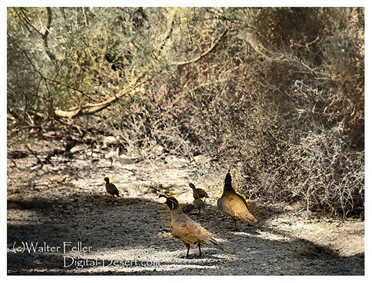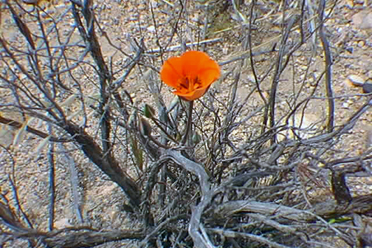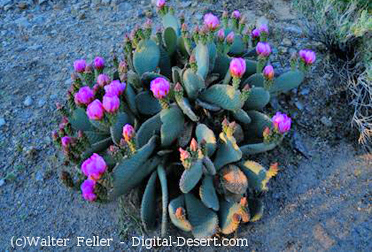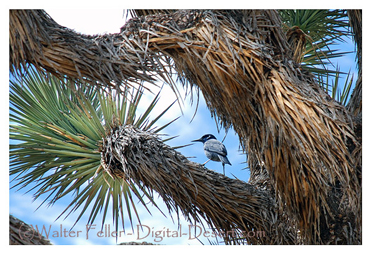Wildlife and Plants
Vegetative cover is primarily chaparral in the Cajon Place. Alluvial fan scrub is an important habitat that is also present, which supports populations of Region 5 sensitive plant species Parry's spineflower, and suitable habitat and a known occurrence of the federally and California state endangered slender-horned spineflower, primarily in the Cajon Wash. The rain-shadow from the San Gabriel Mountains affects vegetation types and water availability in the Mojave Front Country Place. It is a transition zone from high desert to forest. Desert scrub, chaparral and conifer forest are the most dominate plant communities. In higher elevations, bigcone Douglas fir, and Ponderosa and Jeffrey pines are present as scattered individuals or tight clumps. Pinyon pine and Joshua trees are present at the lowest elevations. The Circle Mountain area is dominated by xeric chaparral, and Joshua tree and pinyon-juniper woodlands. Some of the pinyon-juniper woodlands in this area have burned and need protection from frequent fire for regeneration. Short jointed beavertail cactus and Plummer‘s mariposa lily occur throughout the Mojave Front Country and Cajon Places.The southwestern willow flycatcher, least Bell‘s vireo, San Bernardino Kangaroo rat, and arroyo toad occur within the Cajon Place. The biological diversity along the river corridors within this Place is unusually high. Critical habitat for the San Bernardino kangaroo rat is present along Cajon Wash, approximately 874 acres, and the yellow-billed cuckoo has the potential to occur there as well. Habitat for the arroyo toad is present in Little Horsethief Canyon, Crowder Canyon, and Cajon Wash. A minerals withdrawal to promote recovery of the arroyo toad has been proposed in the Little Horsethief Creek tributaries. The largest areas of cottonwood/willow habitat on the national forest are found in Cajon Wash, Crowder Canyon, and Lost Lake; and Least Bell's vireo and southwestern willow flycatcher nest in these locations. This Place also has important habitat for speckled dace, a Region 5 sensitive species. A low-density desert tortoise population may also occur within the Cajon Place. Approximately 2,700 acres of marginally suitable desert tortoise habitat is present in the Baldy Mesa area of the Forest. Important habitat linkages occur between the national forest and adjacent private land and between the Angeles and San Bernardino National Forests. Threats to plant and animal species and other sensitive habitat areas include unauthorized vehicle use, dispersed recreation, and wildland fire.
Invasive species infestations on the Forest, and in particular within the analysis area, are most commonly found emanating from construction sites, roads, trails, fuel breaks, and areas where soil has been disturbed and vectors for weed seed and root fragments are, or have been a factor. Roads and trails provide routes for introduction of invasive species which can be carried in on vectors such as vehicles and equipment from other locations, and eroded soils from infested roadsides.
Invasive plant species rated as having -High? potential for -causing severe ecological impacts? by the California Invasive Plant Council (Cal-IPC) including pampass grass, tamarisk, and fennel occur in low numbers in scattered locations along Rt. 15, and the later two occur in very small numbers in several drainages in the Cajon Place including Cleghorn Canyon. In addition, a small isolated occurrence of perennial pepperweed was recently found on FS road 3N21 north of Rt. 138 above a culvert that drains under Rt. 15 and into Cajon Wash. Perennial pepperweed is an aggressive invader of seasonally wet habitats and a potential significant threat to the native plant community and wildlife habitat in Cajon Wash. This population is currently being managed and is the only known occurrence of this species on the SBNF, therefore it is extremely important to prevent the spread of this destructive species.
Travel Analysis Report
Cajon Pass Off-Highway Vehicle Use
San Bernardino National Forest

Gambel's quail


Beavertail Cactus

Pinyon jay